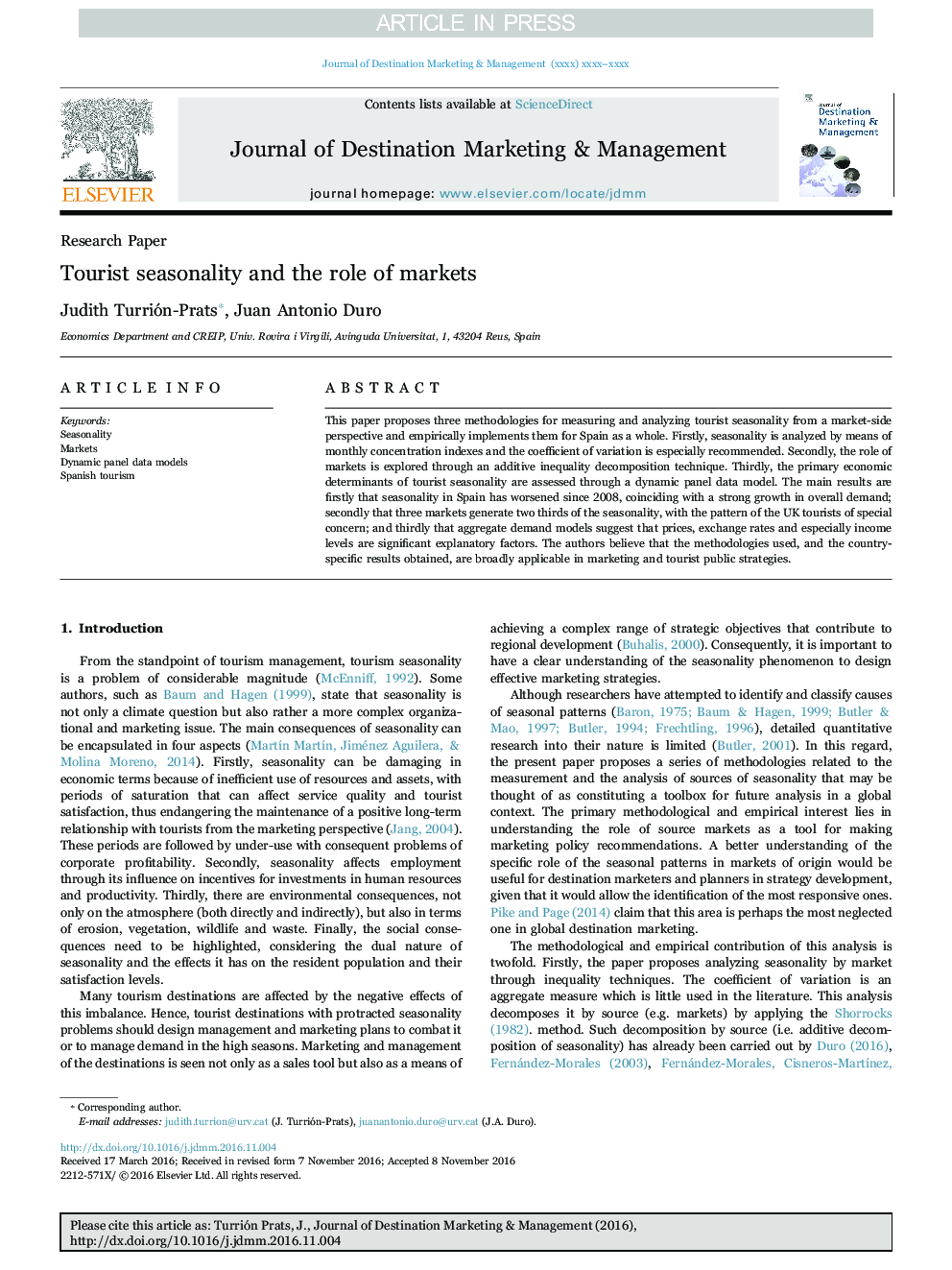| Article ID | Journal | Published Year | Pages | File Type |
|---|---|---|---|---|
| 7419473 | Journal of Destination Marketing & Management | 2018 | 9 Pages |
Abstract
This paper proposes three methodologies for measuring and analyzing tourist seasonality from a market-side perspective and empirically implements them for Spain as a whole. Firstly, seasonality is analyzed by means of monthly concentration indexes and the coefficient of variation is especially recommended. Secondly, the role of markets is explored through an additive inequality decomposition technique. Thirdly, the primary economic determinants of tourist seasonality are assessed through a dynamic panel data model. The main results are firstly that seasonality in Spain has worsened since 2008, coinciding with a strong growth in overall demand; secondly that three markets generate two thirds of the seasonality, with the pattern of the UK tourists of special concern; and thirdly that aggregate demand models suggest that prices, exchange rates and especially income levels are significant explanatory factors. The authors believe that the methodologies used, and the country-specific results obtained, are broadly applicable in marketing and tourist public strategies.
Related Topics
Social Sciences and Humanities
Business, Management and Accounting
Business, Management and Accounting (General)
Authors
Judith Turrión-Prats, Juan Antonio Duro,
